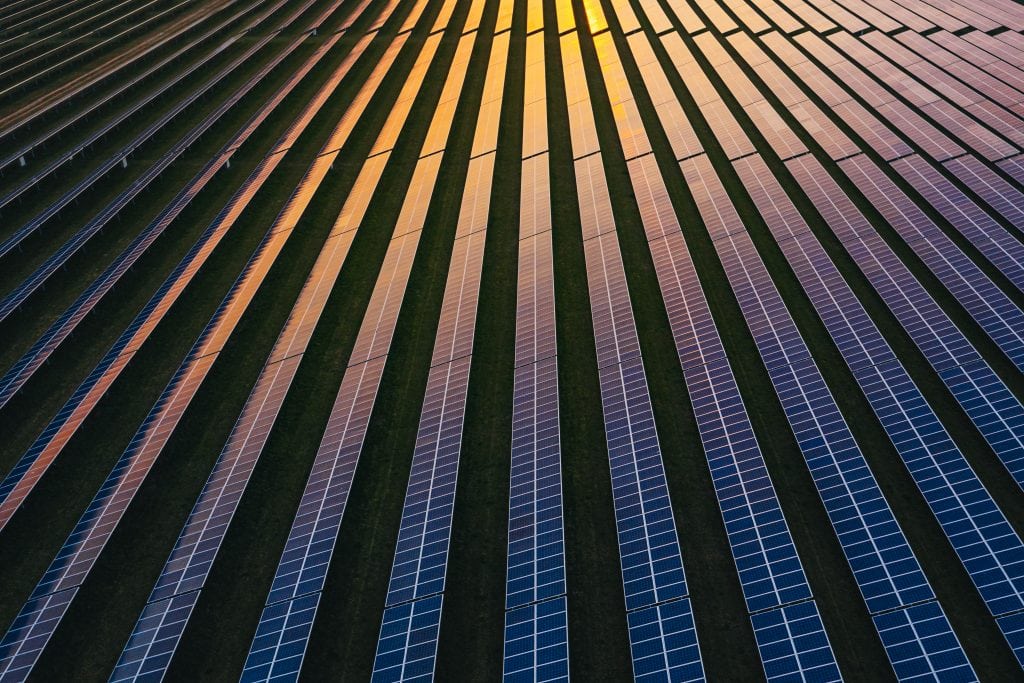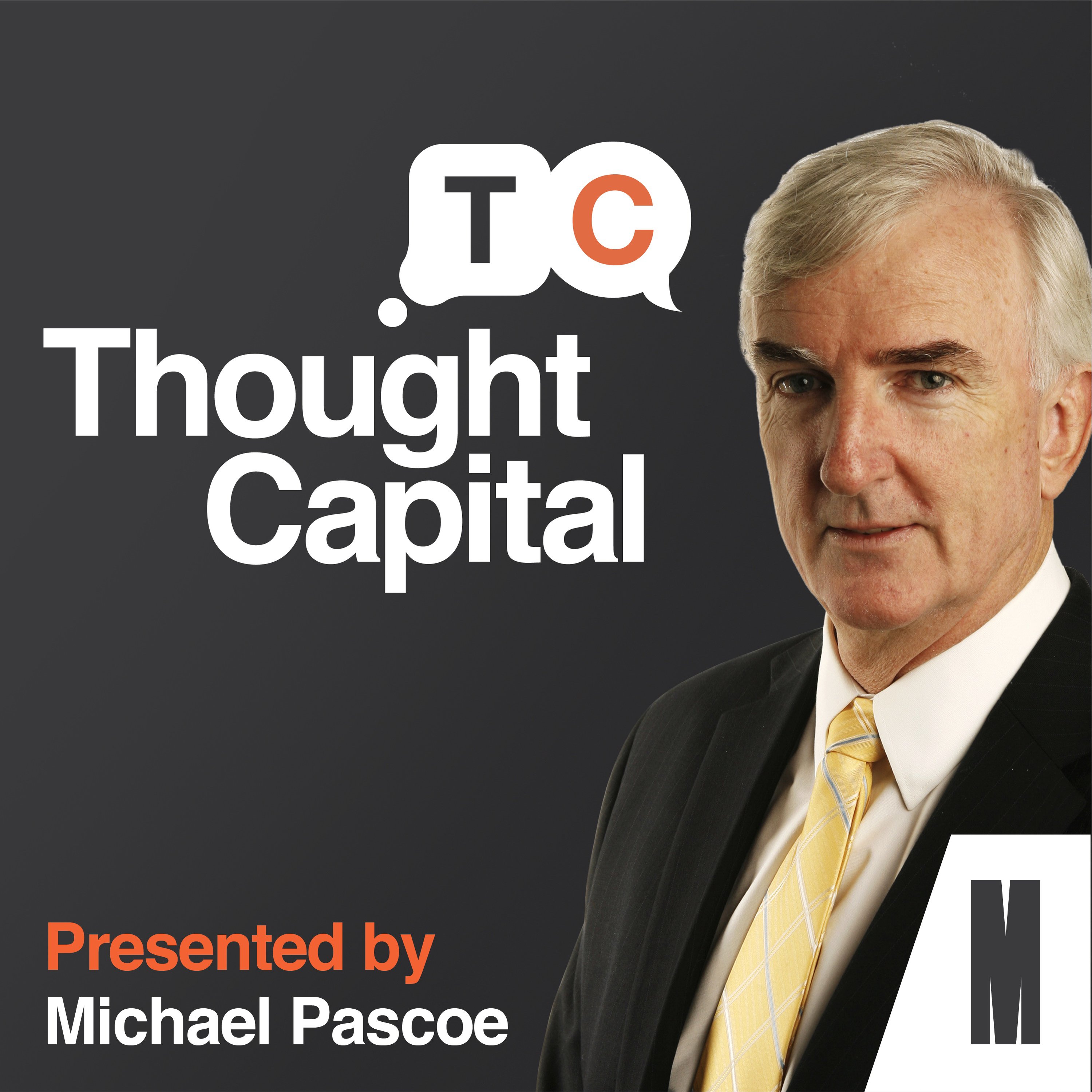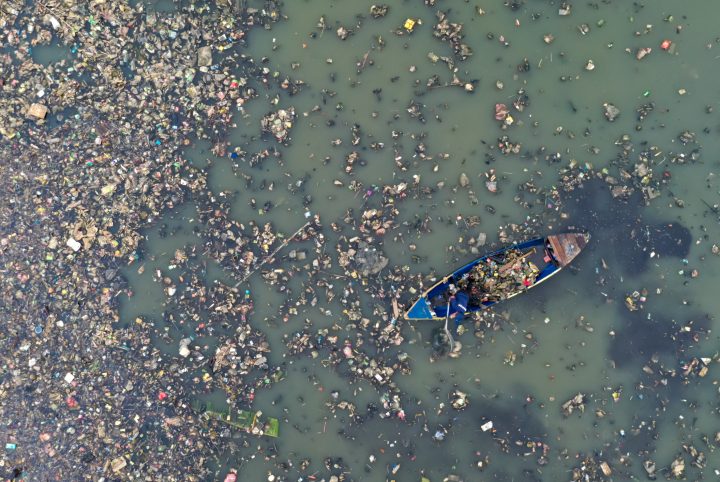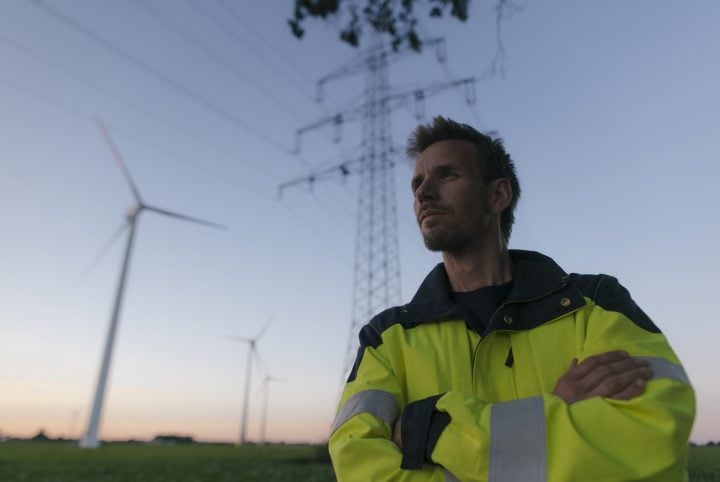Michael Pascoe: Learn, explore, and change with Thought Capital from Monash Business School in Melbourne, Australia. I’m Michael Pascoe.
In this season, we’re exploring the clean economy. What is it? What does it take to get there? And what stands in our way? It is a huge issue, far beyond the capacity of a six episode podcast to comprehensively cover. But we want to discover some of the answers and expand our thinking with the help of experts at Monash Business School and guests from government and industry. We hope you are keen to be inspired, learn and change with this crucial topic of our times.
This is the first episode in this Thought Capital series. So let’s start at the beginning. What is the clean economy? Is it different from the green economy? Is it the same thing as the circular economy? Well, to do that, we have not one but three guests.Dr. Anita Foerster, a senior lecturer in the Department of Business Law and Taxation at Monash Business School. She specializes in environmental law, climate change and what it means for business.
Helen Millicer is a Monash alumni, Churchill Fellow, and a sustainability consultant and strategic analyst who advises government, industry and institutions on a more sustainable future.
And we have Dr. Roger Cohen. He has a background in engineering and finance and is founder of C2Zero, a startup that buys emission allowances to stop polluters using them. Roger partnered with the Monash Centre for Financial Studies on the real carbon index, which seeks to monitor real world carbon pricing.
Let’s start with you, Anita. What do you mean by the clean economy?
Anita Foerster: Thanks Michael. A clean economy is a decarbonized economy. An economy that’s aligned to the net zero emissions reduction goals of the International Paris Agreement on Climate Change. This means an economy that’s transitioning away from carbon intensive energy generation production, transport systems towards low carbon, zero emissions, economic activities. So renewable energy, low carbon, zero carbon fuels such as hydrogen and electric vehicles over timeframes that will allow us to reach the Paris net zero emissions goals by 2050.
Michael Pascoe: Is it different from the green economy or is it just two names for the same thing?
Anita Foerster: I see the green economy as being perhaps slightly broader. It’s not just focusing on the impacts of our economic activities on climate change, but perhaps takes a bit of a broader framing, picking up the way we impact other environmental issues such as biodiversity. The way our economic systems produce other environmental impacts, water pollution, other types of air pollution, for example. So I think the green economy is a slightly broader framing.
Michael Pascoe: So while we’re wrapping up various economies, the circular economy does that fit in there somewhere?
Anita Foerster: Definitely. The circular economy is I guess the opposite of traditional linear economic models, where we extract and use natural resources in energy generation, production, distribution systems, where we consume goods and services and produce a lot of waste and pollution. So these types of linear systems are really the root cause of problems like climate change.
Michael Pascoe: The clean green circular economy, the ultimate goal. Well, Helen, what are the key components in transitioning to the clean economy? What will it take?
Helen Millicer: It’s going to fundamentally require a change to the ground rules. And if I may pick up on Anita’s point, I actually don’t see them as distinctly different. I think that the clean economy and green economy and a circular economy are fundamentally the same thing and the same changes are fundamentally required. Which is that there is a cost on pollution and negative impact upon the environment. And whether it’s a manufacturing process, an energy process or water process, we have to move to a low impact on the environment going forward.
So the key components for a clean, renewable and circular economy is a requirement for us to rethink the ground rules so that there is a cost and disincentive for polluting. And there is considerable incentive for us to consider environmental impacts as we go. That means whether it’s changing the way we manage resources, how material is priced before it goes to landfill, how we have product stewardship programs, how we price and provide incentives for phase out of the carbon fuel stocks and move to renewables. It’s all part of the ground rules that we need to change. And we are, we are changing them.
Michael Pascoe: A price on pull pollution, a carbon price, a carbon tax. They’re words you’re not allowed to mention in Australia.
Helen Millicer: We already put a price on water pollution. We already put a price on landfills. It’s not sufficient for us to rectify the current linear systems which we have. But we are trending in that direction. And that’s happening globally, not just here in Australia. Contrary to people saying we don’t put a price in pollution, we do.
Roger Cohen: I agree with Helen. I think all these clean green, whatever economies, I tend to think of it as the inevitable economy. We’ve just got to get there, otherwise we don’t survive. And it’s really, what’s the transition? How do we navigate from where we are now to that inevitable economy?
Michael Pascoe: Carbon emissions. Roger, your startup, C2Zero, buys emission allowances in the same global markets as polluters do. But instead of polluting, you are locking away your allowances in a virtual vault to stop the big polluters from… Are you trying to undermine the entire system?
Roger Cohen: That would be lovely if we could. Yes and no. I think the system has been put in place to put a cap on pollution and polluters. And cap is really the important word. What we are doing is we’re saying these caps are not aggressive enough to get to the targets. And if we can pull permits out of that cap, then effectively we’re reducing the capacity to pollute. And we’re squeezing the polluters. We’re doing what the regulators are not doing.
Michael Pascoe: So how can you do that though? Where does the money come from to be able to buy and lock up these permits?
Roger Cohen: Good question. The way our business works is we buy those permits. We effectively tokenize them, which means we cut them into little bite size pieces and we stick those onto good services, activities that people pay for. So when you buy a cup of coffee or when you attend an event, or when you buy an item of clothing, we stick a token on it that’s got a certain amount of carbon.
And what we try to do is we try to stick as much carbon as the seller of that item can bear. So we, for example, have got a line of T-shirts, which have a ton of carbon in them, they sell for about $150, but that’s a good way of taking carbon out of the system.
Michael Pascoe: So this is relying on the Goodwill and generosity of individuals concern about the environment.
Roger Cohen: It is, but it’s also relying on businesses, who like to call themselves net zero or carbon neutral. And generally, to do that after doing what they can themselves, they go out and they buy carbon credits or they set a budget to spend on that gap. So what we are saying is take that money. And instead of using it to maximise the tons of carbon, you’re buying, use it to buy some emissions allowances, and then stick those, in a figurative way ,to the products you sell and engage your customers and your audience.
Michael Pascoe: Well, Helen, are there any easier wins for Australia in transitioning to a clean economy?
Helen Millicer: There is considerable momentum and COP26 showed us the appetite for change globally. We need both big changes and lots of little changes. And the sorts of initiative that Roger has with his company is one. We do really though need to engage big business, associations and politicians to bring about the big changes that we need. We tend to think that things have to be revolving around regulation, grants, that we take an innovation. We gradually mainstream it. There’s some element of truth around that you take an innovation and you grow it. But what we need to have is some really smart, large scale initiatives so that we transition to a clean economy.
And one of the best ones I can give is an example of the way that the Europeans are transitioning their whole vehicle emissions from high emissions to low emissions. It’s a very simple requirement upon sellers of vehicles that they have to meet certain targets by 2025. And it is driving substantial change through the whole supply chain. A simple signal like that brings about a monumental change. There are easy things that we can do if we have some good, intelligent debate about it. And one of the reasons why I was so exciting talking to people connected with Monash Uni is that these are the ideas that can be canvased and researched and proposed within universities and taken out to industry and government as well.
Michael Pascoe: There is low hanging fruit if we can,-
Helen Millicer: Oh, absolutely-
Michael Pascoe: To grab it.
Helen Millicer: Absolutely. And if we don’t, the challenge that we have, Michael, is that we will be seriously left behind. So we are currently classed as a developed nation, but in some respects our policies and programs and targets are really almost third world. The reason we are a developed nation is because we are so resource rich. But being high consumptive resource rich is not necessarily the best way for a well-developed economy into the future. Not when there’s going to be a price on carbon. Not when there’s a price on inefficiency.
Not when you are not going to be able to trade your commodities overseas and export anymore because you are too inefficient with your materials and your energy system. So unless we make these changes as an economy… unless we make these changes, Australia is going to slip into second place.
Michael Pascoe: Well, Anita, in the big picture, how do you think Australia’s going in the transition? How do you score it?
Anita Foerster: It’s really interesting to see the many, many Australian companies and international companies that are setting their own net zero 2050 targets and committing to align to Paris Agreement goals. In Australia, we’re seeing this across the economy from our big miners to major banks, and I guess a really important driver here is the recognition of the business case and the financial risks associated for companies for not moving with the transition. So Australian companies have legal obligations under the corporations law to identify material financial risks to their business, to disclose those risks to the market, to take steps, to manage those risks. And so this includes risks posed by climate change that might relate to the physical impacts of climate change, more storms, more floods, more fires. Leading to damage to assets, interruption to supply chains, bigger insurance bills.
Or the transition risks, which are the risks associated with governments introducing new laws and policies to address climate change, changing markets, such as export markets for our fossil fuel products, changing technologies. These risks can all impact companies financially.
And Australian companies, as companies around the world are under increasing pressure from their shareholders, particularly big institutional investors, to demonstrate that they have identified their exposure to these risks, and are putting forward a transition plan to maintain their financial viability going forward as the world transitions away from fossil fuels.
Just one thing on that, I think it’s important to be a little skeptical when you’re looking at company commitments in this area and be alert for greenwash. It’s all very well to set a long term 2050 emissions reduction target. But what you’re doing in the near term is what really matters.
Michael Pascoe: So change is happening in the business sector. Who else is doing heavy lifting in Australia when it comes to climate change?
Helen Millicer: The heavy lifting really has been done in Australia by state governments. We have substantially improved electricity generation, but we have not made any inroads on our transport emissions, on our agricultural emissions, emissions from gas related or fugitive emissions from landfills. So all the heavy lifting has actually to date been done in the electricity sector, and the rest of it is still pretty much business-as-usual. But going back to this point of a clean economy is more than just electricity.
So there is an appetite for some kind of structural change. If we can achieve the same kinds of changes in other sectors, and with other initiatives, we will be home and highest.
Michael Pascoe: The third and sometimes forgotten level of government, local government. Is their hope there for initiatives and change?
Helen Millicer: State governments and local governments are really the powerhouse for a lot of things here. Local councils, as Anita has said, have the ear to the ground, the local contacts. So many of them for example, have declared climate emergencies, not at state or federal level, but that has really driven a lot of change and discussion within communities. 47 Victorian local councils have joined together to do a bulk buy power purchase agreement for a hundred percent renewable electricity by 2025.
They have formulated some fantastic strategies, including going off gas for all council buildings, going to zero emissions, vehicle fleets, electric cars, supporting cycling infrastructure. Local councils can do the urban forest programs to plant more trees to keep urban heat island effect down. State governments are doing fantastic things here in Victoria. The state government has adopted, to some extent what we might call a circular economy policy, which requires that all households have diversion of organic waste from land landfill by 2030.
And that therefore is going to mean that a substantial amount of methane that currently is produced at landfills will be diverted to composting or other digestion facilities. So state governments have that capacity. Victoria has taken the lead with regard to that. There are also taking the lead with regard to things like getting all glass out of curbside collections for recycling for other purposes. So there is a lot that is being done and there’s a lot more that can be done. For any of people listening to this program, there’s absolutely no doubt that there are jobs galore and plenty of opportunities in the space going forward to bring about the changes that we need in the Australian economy, to bring us up to speed to the best in the Europe and elsewhere around the world before we are left behind.
Michael Pascoe: We tried to establish what the clean economy means. We’ve learned what is already happening, but what needs to happen next? What is the priority if you were given the power to call it on? Roger.
Roger Cohen: First of all, I would create a global carbon price, which would be one price harmonised across the world and a realistic price that leads to the sort of 75 US Dollar, 2030 targets. I would then look at a global way to manage that money so that the third world doesn’t get penalised. So if it does get redistributed properly, and this is incredibly complex, but I think something worth doing. Will that happen? I think the chances in the short term are very, very slim given that we don’t have any sort of harmonisation and we don’t even have a carbon price here in Australia and other countries. So more realistic I think is just getting on the page and starting to put into action some of these pledges to take seriously 2050, and to start realising that now’s the time to begin.
Michael Pascoe: Helen?
Helen Millicer: I concur with Roger on that. In the same way we have the US dollar regarded as the global standard for monetary policy, so we can have the same for carbon. It’s difficult, but not insurmountable. Whether it’s the United Nations or however that is achieved, that would be a magnificent initiative for us globally. Obviously, that would then help to see us transition to put a price on other kinds of related pollutions, if you want to call it that, and incentives for other changes. So for efficiency, it would enable us to rethink how we support a lifespan of product, because the longer a product lasts, the less emissions it has both in terms of carbon related and water and so forth. So it starts to all feed into a more circular and sustainable economy. And the cost and incentive becomes all the better for longer life product, for repair reuse and so forth. That would be an ideal situation indeed. And I’d put my all and everything into supporting something like that.
Michael Pascoe: Australia’s established its reputation as a global laggard of siding with the big fossil fuel powers. Do you think we got a chance to catch up with the rest of the world? Think we’ve got a chance to do better, to become a lead?
Roger Cohen: I’m optimistic. I say that because if we change, it’s not an existential threat for us. We can do it.
Michael Pascoe: Helen?
Helen Millicer: Oh, I concur. I’m an optimist, a determined optimist. And I believe good will prevails, that we will get to this. My only concern is, will we get to it in time?
Michael Pascoe: Dr. Anita Foerster from the Department of Business Law and Taxation, Dr. Roger Cohen from C2Zero, and Helen Millicer from One Planet Consulting. Thank you for talking to us.
Thank you for listening to Thought Capital from Monash Business School. If you’ve enjoyed the podcast, don’t forget to give us a five star review and tell your family and friends about us. Next time, we’ll be talking about how to measure a clean economy. Join us then.
Thought Capital was written and produced by Tina Zenu, editing by Nadia Hume. Our executive producer is Helen Westerman.




